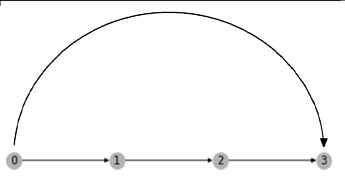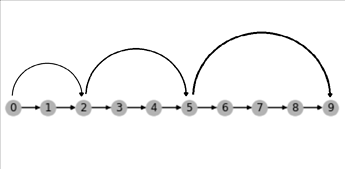Hi, Firstly, thank you very much for your reply ! may I please describe a little more clearly
src = np.arange(9)
dst = src + 1
src = np.append(src, [0,2,5])
dst = np.append(dst, [2,5,9])
g = dgl.graph((src,dst))
g.edges()
(tensor([0, 1, 2, 3, 4, 5, 6, 7, 8, 0, 2, 5]),
tensor([1, 2, 3, 4, 5, 6, 7, 8, 9, 2, 5, 9]))
tt = torch.arange(12).repeat(3,1)
g.edata['x'] = torch.permute(tt, (1,0))
nodes = g.nodes()
g0 = dgl.node_subgraph(g, nodes[0:3])
g1 = dgl.node_subgraph(g, nodes[2:6])
g2 = dgl.node_subgraph(g, nodes[5:])
print(g0.edata['x'].shape)
print(g1.edata['x'].shape)
print(g2.edata['x'].shape)
torch.Size([3, 3])
torch.Size([4, 3])
torch.Size([5, 3])
if I want any edge between arbitrary distance [ src and dst ] in directed graphs to :
- find the path between src and dst and concat every edges features and pass through the same linear layer to have shape torch.Size([1, 3]) to update the big edge. can I pad all of them to some same length ?
def Pad(ii):
ee = ii.edata['x']
ee = F.pad(input=ee, pad=(0,0,0,7 - ee.shape[0]), mode='constant', value=0)
return ee
print(Pad(g0).shape)
print(Pad(g1).shape)
print(Pad(g2).shape)
torch.Size([7, 3])
torch.Size([7, 3])
torch.Size([7, 3]) ->> self.Linear = nn.Linear(7,1)
then can update the big edges with it … ?
or something like
class CClass(nn.Module):
def __init__(self):
super(CClass, self).__init__()
self.weight = nn.ModuleDict()
for _ in range(10):
self.weight[str(_)] = nn.Linear(_,1)
def forward(self,G, edata):
num_edges = G.num_edges()
oo = self.weight[str(num_edges)](edata)
return oo
or does this kind of operation make sense to graphs engineers…,…
Thank you very much for your time in reading and assisting my question


